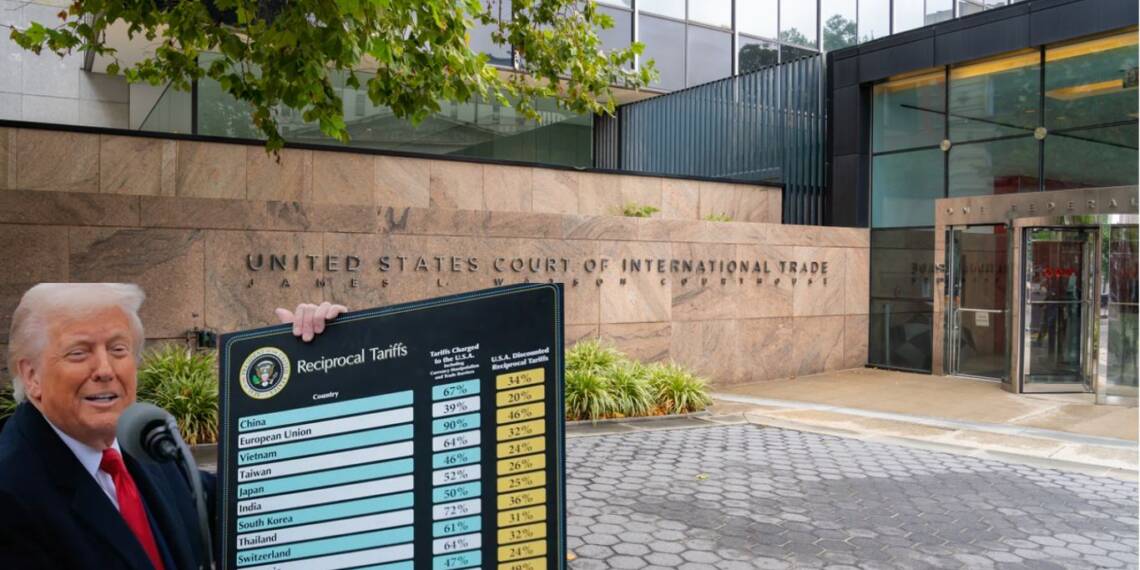On Wednesday, a U.S. trade court blocked President Donald Trump’s plan to put tariffs on goods from countries that sell more to the U.S. than they buy. The Court of International Trade ruled that Trump went beyond his legal powers by trying to impose these across-the-board tariffs.
According to the court, only Congress has the authority to control international trade. This power cannot be taken over by the president, even in the name of protecting the economy during a national emergency. The judges made it clear that they were not judging whether Trump’s policy was smart or effective, but that the law simply does not allow him to do what he did.
After the decision, the Trump administration quickly filed an appeal and questioned whether the court even had the right to stop the president. The Court of International Trade is based in Manhattan and handles cases related to trade and customs. Its decisions can be appealed to the Federal Circuit Court in Washington, D.C., and possibly to the U.S. Supreme Court.
Tariffs have been a key part of Trump’s trade policy. He used them as a weapon in trade wars to try to bring jobs back to the U.S., reduce the trade deficit, and pressure other countries to give better trade deals. However, these tariffs caused major disruptions in global trade and created uncertainty for businesses.
Many companies, both large and small, have been struggling to keep up with Trump’s fast-changing tariff policies. The constant changes have made it difficult for them to plan their supply chains, pricing, and staffing.
The White House responded by saying that the U.S. trade deficit is a national emergency. A spokesperson, Kush Desai, said the trade gap has hurt American workers and industries and weakened national security. He criticized the court’s ruling, saying that unelected judges should not decide how to handle such emergencies.
Financial markets reacted positively to the court’s ruling. The U.S. dollar rose in value, especially against the euro, yen, and Swiss franc. Stock futures in the U.S. and markets in Asia also went up.
The court’s decision could seriously damage Trump’s tariff strategy. Without the quick power to impose tariffs through the International Emergency Economic Powers Act (IEEPA), his administration may now need to rely on slower, more traditional trade investigation processes. The IEEPA is a law that allows the president to act during a national emergency to address unusual threats. However, it has mostly been used for sanctions, not tariffs.
This case was brought to court by two groups: the Liberty Justice Center, which represented five small U.S. businesses that import goods, and a coalition of 13 U.S. states. The businesses argued that the tariffs would hurt their operations, making it harder to stay competitive.
The court agreed with them, stating that if the tariffs were illegal for these plaintiffs, then they were illegal for everyone. Several other lawsuits challenging the tariffs are still pending.
Oregon’s Attorney General, Dan Rayfield, whose office helped lead the state’s lawsuit, called the tariffs reckless and harmful. He praised the ruling, saying it proves that the law matters and that the president can’t make such trade decisions on his own.
Trump had claimed that he could use the IEEPA to impose tariffs because the trade deficit was a national emergency. He set a general 10 percent tariff on all imports and even higher rates for countries like China, which have big trade surpluses with the U.S. However, many of those tariffs were paused soon after, and the U.S. later agreed with China to ease tariffs for 90 days as they worked on a long-term deal.
The Justice Department argued that the lawsuits should be thrown out, saying the plaintiffs hadn’t been directly harmed yet and that only Congress could challenge a national emergency declared by the president.








